What kind of dining chairs are best? Interior designers' choices for comfort and style
Interior experts share their advice for choosing dining room chairs including the pros and cons of different designs


'What kind of dining chairs are best' is a topic of endless debate among interior designers and often one of the most challenging parts of designing a dining room.
With such a wide variety of seating designs available, from formal, upholstered chairs to relaxed wooden designs and benches, finding the right seating for your dining room ideas can be daunting.
Choosing dining chairs is hugely subjective, and which design is best for you will ultimately depend on personal taste and what you find comfortable, however, there are plenty of other factors to take into account that may have an impact.
To help you make the right choice, we asked interior designers for their advice on what kind of dining chairs are best – here's what they had to say.
What kind of dining chairs are best?
To find out what kind of dining chairs are best for your space one of the first things to do is to examine how you use your dining room. Do you have a separate dining room reserved for entertaining, or is your dining area part of a multifunctional kitchen diner?
The shape and the size of the dining table you choose will also have a big impact plus there's also look and style to take into account. No matter what, comfort should be the deciding factor, says New York City-based interior designer Phillip Thomas. 'If the chair is not comfortable, there is no delicious menu or fine wine that can make up for an uncomfortable chair.'
Also, regardless of style, 'a dining chair should always have a seat height of around 19in,' says Simon Temprell, interior design manager at Neptune.
Design expertise in your inbox – from inspiring decorating ideas and beautiful celebrity homes to practical gardening advice and shopping round-ups.
Below we've listed some key aspects to consider when buying dining room chairs including advice from interior designers on the pros and cons of different designs.

To upholster or not to upholster?
When it comes to comfort, nothing beats an upholstered dining chair, plus they offer the chance to showcase beautiful colored and patterned fabrics. Upholstered armchairs work well in formal traditional dining rooms helping to bring grandeur and a sense of occasion to dinner parties.
'Upholstered dining chairs are more luxurious, and bring a feeling of softness and warmth into a space,' says Simon Temprell, interior design manager at Neptune.
'Typically the best dining chairs are upholstered with a rounded shape. They will curve to your back and create comfort for your guests,' adds interior designer Tracy Morris.
Designer Phillip Thomas is also an admirer and suggests that 'upholstery is one of the elements that can aid in creating a cozy dining environment. Upholstered chairs are also very helpful for sound mitigation. As we all know, dining rooms can often be noisy due to a lack of sound absorbing surfaces.'
However, if you have a dining area in an open-plan living room or are looking for kitchen seating ideas you may want to opt for something less formal.
'In a high-traffic area such as a kitchen or breakfast room (or a home with young children and pets) it would be best to choose a timber or painted chair for practicality and easy clean-up,' says Simon Temprell. Of course, to make them more comfortable you can always add seat pads.
Alternatively, if you have a small dining room, then consider lightweight, stackable designs made from metal or plastic.

Are dining chairs with arms better?
Another big debate when it comes to dining room seating is whether to choose chairs with or without arms – again, there are pros and cons for both designs. If space is tight armless chairs are undoubtedly more practical, but if space isn't an issue then they can be luxuriously comfortable and versatile.
'I love seats with arms, as they’re the ultimate in comfort and can double up as a reading or occasional chair, but they do require a little more space – as a general rule, they need an extra 7in per chair, which is why they’re often used at the head of the table,' explains Sue Jones, co-founder and creative director at Oka. 'If you’ve got a round table, or lots of room to play with, nothing could feel more inviting than armed chairs placed all the way around – your guests will thank you for it.’
Alternatively, New York City-based interior designer Phillip Thomas describes how they can hinder engagement. 'Some clients of mine find that armed chairs put up an invisible fence between guests while armless chairs allow people to be closer to one another. An armless chair is also better if space is limited. You can seat many more people around a table when using armless chairs.'
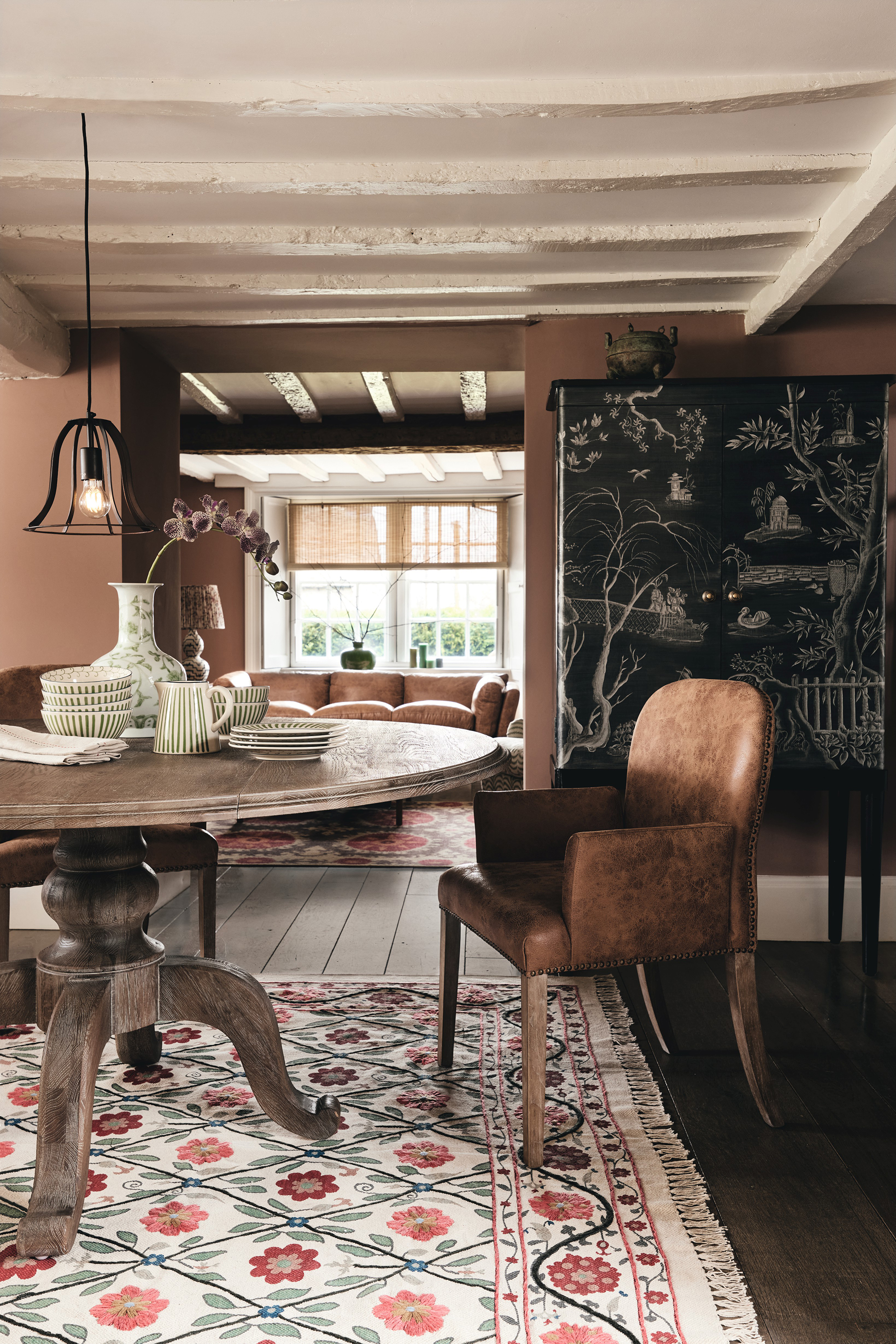
Take care with fabric choice
Dining rooms are places susceptible to spillages, so if you're considering upholstered dining room chairs then take care with your fabric choice.
Choose fabrics that are hard-wearing and stain-resistant says Roger Jones, director of Sibyl Colefax & John Fowler. 'Leather and horsehair are traditional, but there are plenty of modern fabrics that are equally practical.
'In the summer, simple linen slip covers on the dining chairs can transform the look of the room – and can easily be put in the washing machine if they become marked,' he adds.
This is a good choice for those who have little children or have dining tables in busy areas exposed to lots of wear and tear, plus, they can be a great way to refresh the look of a dining space from season to season.
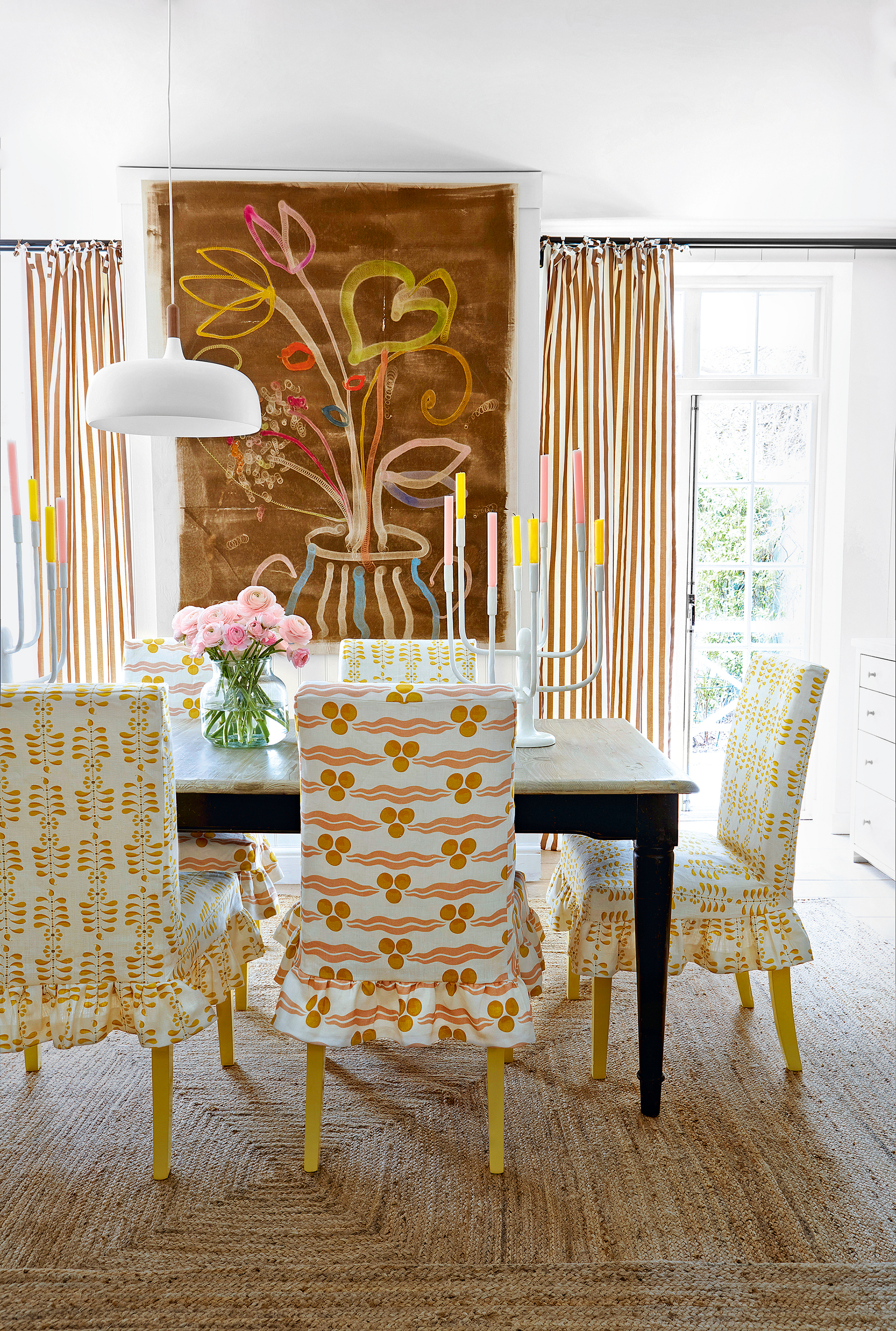
The great thing about upholstered armchairs is that you can get creative with fabrics and with such a wide array to choose from there's guaranteed to be something to match the look and feel you're after. While staining can be a drawback, 'developments in the textile industry have seen the introduction of various stain-resistant and performance fabrics including velvets, chenilles and linens that are life-proof,' says Amanda Huber, owner of Dining Chair Co, so there's no need to compromise on style.
For a more casual dining room, 'using colorful dining chairs is an unexpected way to add a playfulness to the room,' suggests Anne Hepfer. Alternatively, you could make a real statement with a bold, patterned design.
'We prefer seats that aren't too heavy. A seat with two-piece composition allows for more fun with fabric combinations to brighten up the room,' adds Michael Sandsmark, interior designer at Design West. For a design that is both stylish and practical, you could try using a basic stain resitant design on the seat with a statement design on the back of the chair.

Think about back height
It may not be the first thing that you think about when choosing dining chairs, but the back height of a chair can impact both the comfort of the seat and the look of the room say experts. High-backed dining chairs work well in formal settings and traditional dining rooms, while low-backed designs have a more relaxed feel.
'Historically, upholstered dining chairs tended to be higher backed both for support and warmth – our Cromwell, Georgian and Classic Adam designs are great examples of this. Nowadays though, lower-backed chair designs have really grown in popularity as they suit the more contemporary settings that modern-day living brings,' says Amanda Huber, owner of Dining Chair Co.
'Some of our clients will choose a higher back if they have chosen an impactful fabric to make a statement, and wish to be able to see it clearly across the table or as they enter the room,' adds Amanda Huber.
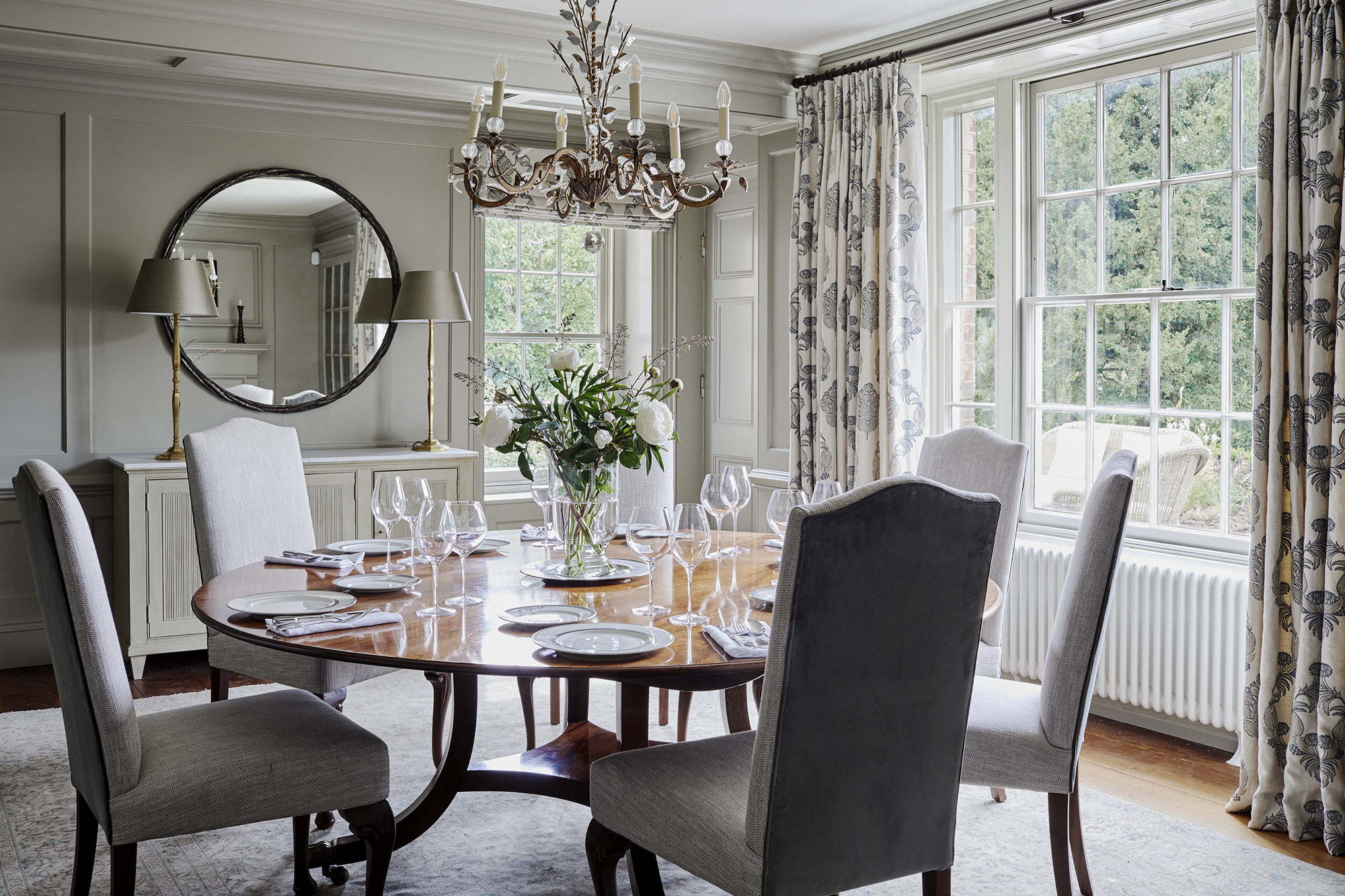
Alternatively, if you don't want to distract from other features within the room then more discreet low-backed designs are a better option. Similarly, designs with an open frame like wooden Scandinavian or Mid-century style designs are perfect if you're looking to make a room feel more spacious.
Simon Temperall of Neptune advises that, 'chairs with a taller back or tufting tend to feel more formal, whereas chairs with a lower back are much more versatile and work just about anywhere in the home.'
'If you want your dining room to look elegant and elevated, go for a dining chair with a tall back,' adds Anne Hepfer.

Consider bench seating for a relaxed feel
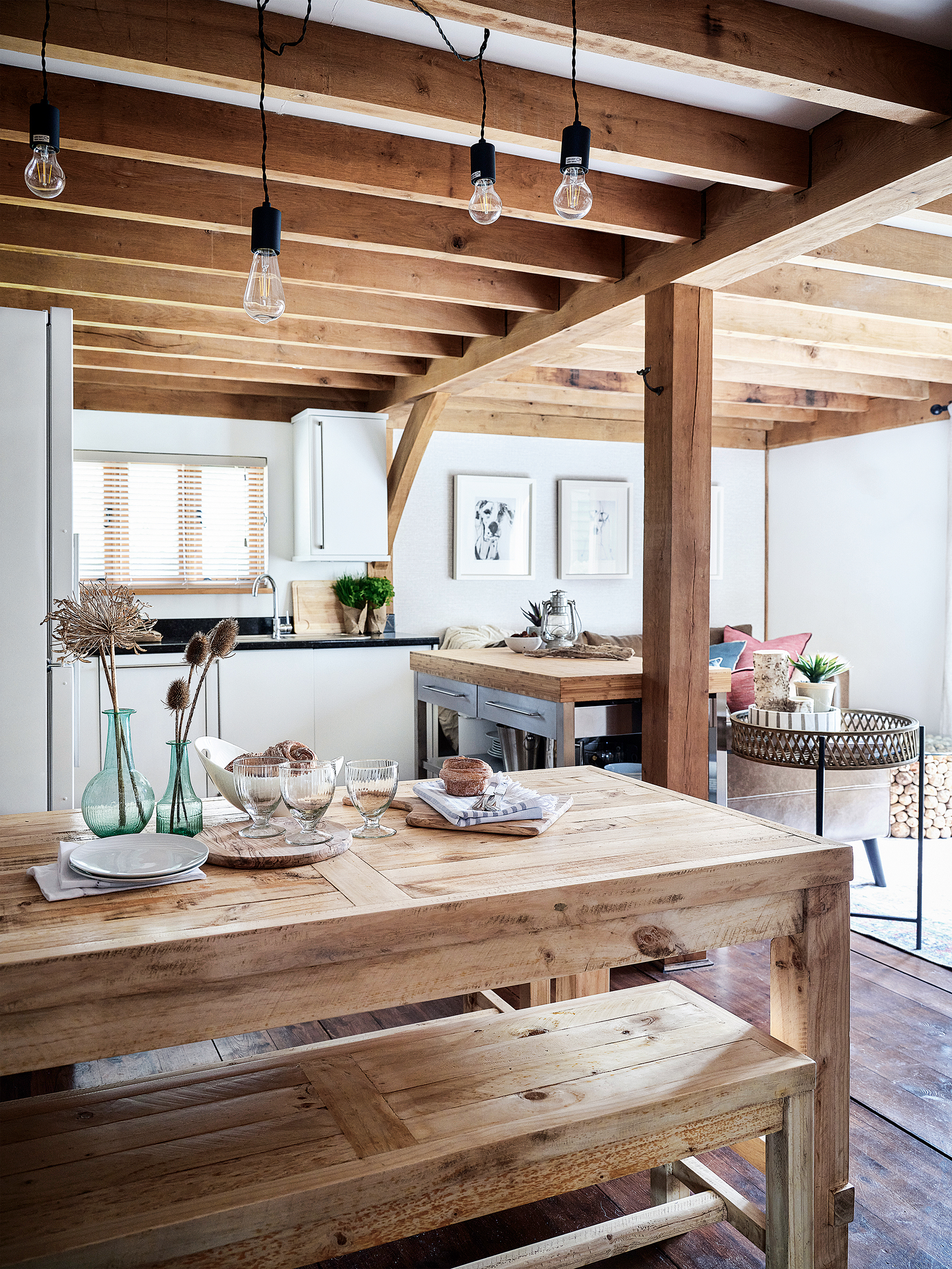
Bench seating is becoming an increasingly popular alternative to dining chairs, especially in kitchen diners and open-plan living spaces.
Their backless design keeps sightlines clear, making spaces feel open, plus benches help rooms feel more sociable, and, while they may not be as comfortable as seats, they can easily be made more comfortable with the addition of bench cushions or sheepskin throws. Furthermore, table and bench sets that have benches designed to fit neatly under the table make wonderful seating solutions for small spaces.
We're also seeing the return of banquette seating. Like benches, banquettes can contribute to a relaxed ambiance and encourage interaction. 'I like to build banquettes around the perimeter to create a lounge-like environment that can be attractive and useful during cocktail parties,' says interior designer Phillip Thomas.
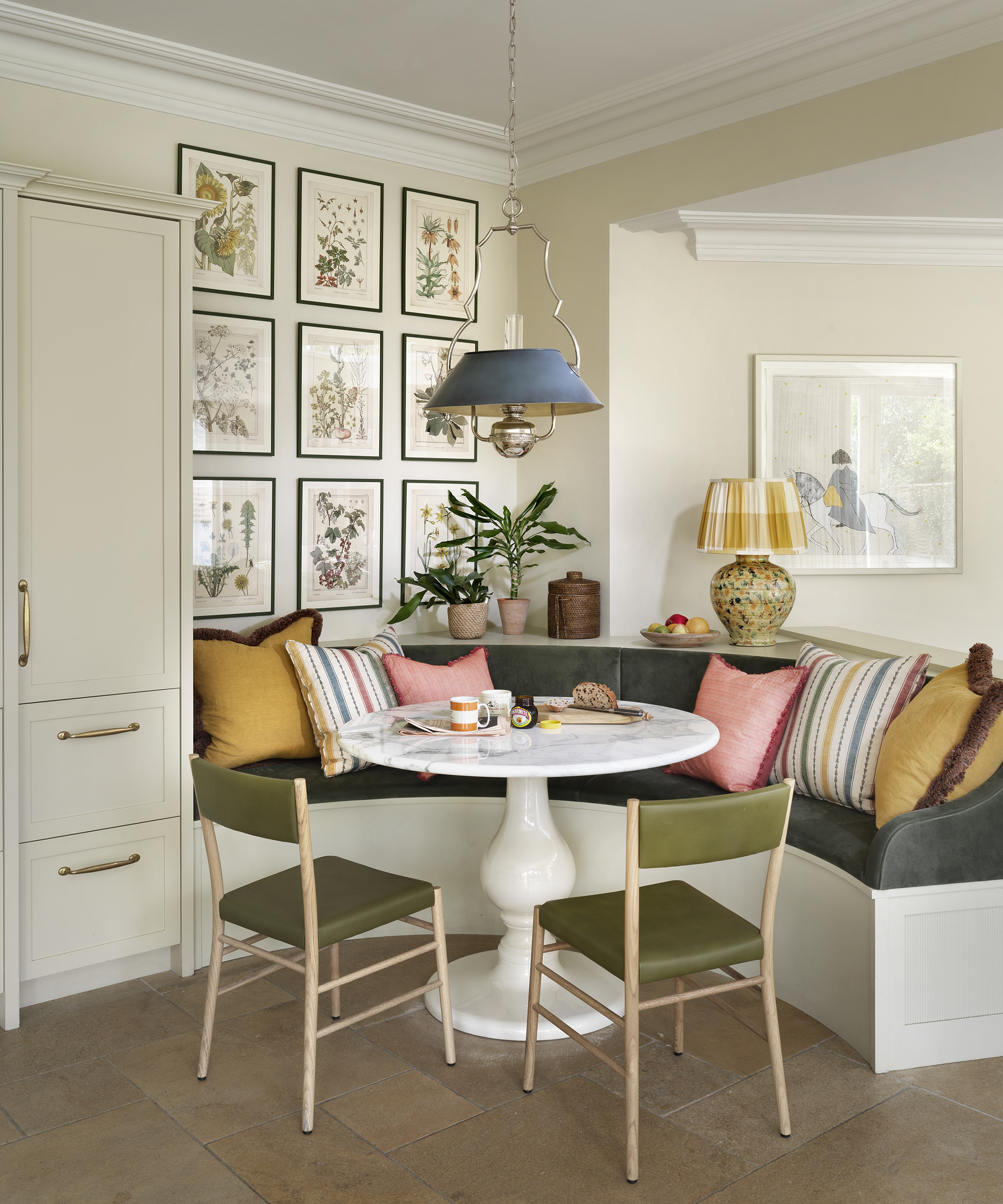
However, the drawback of seating with fitted fabric is that it can be hard to clean upholstery, so consider a material that is easy to wipe; cleaning faux leather is easier than tackling the real thing.
'Remember that leather is not as practical as it might seem in a dining room: oil and grease will soak into the leather, leaving dark marks that are very difficult to remove,' warns designer Simon Temprell.
Alternatively, try a banquette in a dark fabric that will better disguise stains and add color with bold cushions, as is demonstrated in the space above by Salvesen Graham.

Pippa is a contributor to Homes & Gardens. A graduate of Art History and formerly Style Editor at Period Living, she is passionate about architecture, creating decorating content, interior styling and writing about craft and historic homes. She enjoys searching out beautiful images and the latest trends to share with the Homes & Gardens audience. A keen gardener, when she’s not writing, you’ll find her growing flowers on her yard for styling projects.